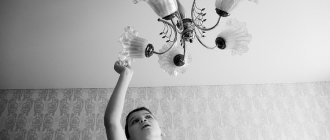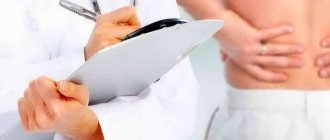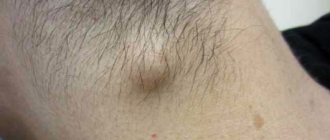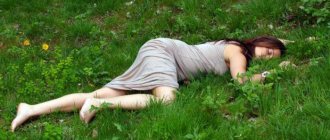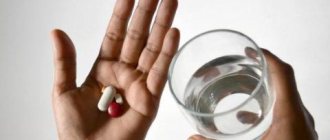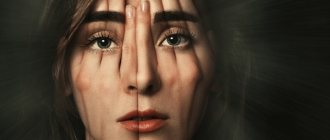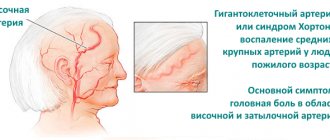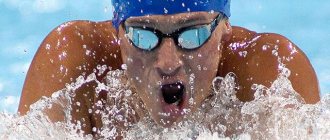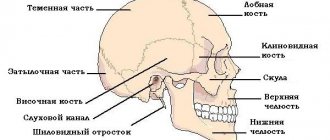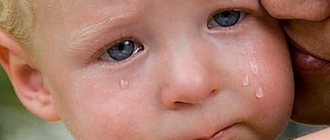When is it necessary to consult a doctor?
In rare cases, self-treatment of a lump is prohibited.
If, in addition to a bump on your forehead, symptoms such as:
- inability to turn your head;
- nausea;
- vomit;
- enlarged pupils;
- blurred vision;
- severe pain in the forehead;
- retardation of movements;
- confusion;
- pale skin, blue lips;
- convulsions.
These signs indicate a concussion and require urgent medical advice.
Head injury in children
A head injury in a small child most often occurs due to parental oversight. Older children hit their heads when they fall when they begin to walk. Sometimes injuries happen during games.
A peculiarity of childhood injuries is that the child is not always able to say what hurts him and how. Not all functions of his brain are formed (speech, writing, reading). Therefore, it is impossible to check the symptoms of violation of these functions, as well as to carry out some tests that are performed according to the instructions (digital, heel-knee, and others).
Due to the fact that the fontanel of the skull is not closed in young children, their intracranial pressure does not increase sharply and significantly, and the signs of intracranial hypertension are not always pronounced. All these features lead to the fact that diagnosing a concussion in a child is difficult, and manifestations can be minimal even with severe damage.
If a child falls and hits his head, but there are no visible injuries, then you need to pay attention to the following symptoms:
- the child cries for a long time;
- vomiting occurred;
- he became drowsy;
- holds his head unnaturally;
- stopped fixating his gaze or asymmetry of the eyes and face appeared;
- there was loss of consciousness (even short-term).
In general, for any head injury in a child, especially a small one, you should consult a doctor. If for some reason this is not possible, you need to watch the baby especially closely for the first 24 hours. It is even recommended to wake him up periodically to assess whether his lethargy and other symptoms are increasing.
First aid for a forehead bruise
If, in case of a bruise, you immediately provide first aid to the patient, then the next day there will be no trace of the bump.
First aid for forehead bruise:
- Carefully treat the impact site with hydrogen peroxide (or Chlogexidine, Miramistin), especially if, in addition to the bump, there is a bleeding wound.
- Apply a cold object to the sore spot. This could be: a cold towel, a bottle of ice water, a large silver spoon. You can take a piece of frozen meat or fish out of the freezer, but before applying it to your forehead, be sure to wrap it in a clean cloth.
Cold compress
After the functionality of some of the vessels and blood circulation have been largely restored, the bruised area will require a cold compress. Its action is diametrically opposed to rubbing. A cold compress is necessary to prevent bleeding through ruptured vessels. Under the influence of cold, they shrink and become clogged, thereby preventing the formation of a tumor in the form of a lump on the head.
To prevent the formation of a hematoma, it is best to apply ice cubes, previously placed in a plastic bag and wrapped in cloth, to the bruised area. If they are not there, then anything with a negative or low temperature will do. This could be a pack of ice cream or butter taken out of the freezer. Frozen vegetables, fruits, berries, and pieces of meat will give a similar effect. But in any case, in order to prevent hypothermia of the bruised area, the procedure using them should not exceed several minutes.
Treatment of a bump on the forehead
If there are no contraindications, then treatment of a bruise on the forehead can be successfully treated at home.
Treatment for a bump on the forehead:
- Iodine network. With the help of iodine, the hematoma resolves very quickly. But it has one drawback - it wears out quickly. Therefore, it is necessary to constantly update the “iodine pattern”.
- Bodyaga. Bodyagi lotions are very effective. In the pharmacy you can see various lotions and creams based on it.
- Heparin ointment effectively relieves inflammation and treats the consequences of hemorrhage.
- If you need to get rid of a lump in a short time, then homeopathic ointment “Traumel S” will help. Eliminates bruise marks in 1 hour.
- The following ointments have shown their effectiveness in the fight against hematoma on the forehead: “Troxevasin”, “Leoton”, “Rescuer”.
- Aibolit ointment based on beeswax also quickly gets rid of the bump.
Mechanism of development and symptoms
A lump is a neoplasm that appears on the head due to bruising of soft tissues. It occurs as a result of head trauma. Why does injury occur? There are several reasons:
What is the mechanism for the appearance of a lump? This tumor occurs due to damage to blood vessels. They burst, and blood flows out of them into the space between the skin and the skull. Thus, the more blood accumulates under the skin, the larger the lump appears.
In order not to confuse a lump after a bruise with another formation on the head, you should pay attention to some of its symptoms. Among them:
The lump itself is not very dangerous. Its appearance is due to the fact that there is nowhere for blood to be absorbed after the blood vessels rupture. There is no layer of fiber on the head that absorbs blood, so it collects directly under the skin in the form of a tubercle. After some time (from 2 days to a week), the lump goes away.
Sometimes some signs appear that should not be ignored. If they occur, you must urgently seek qualified help. Among them are:
Such symptoms may indicate a concussion, intracerebral bleeding, or skull fractures. Therefore, the patient needs immediate medical attention. If alarming signs appear in a child, you should call an ambulance, and until it arrives, provide him with peace.
Treatment of bumps on the forehead with folk remedies
Among folk remedies, a compress made from raw potatoes is very popular. Grate 2-3 medium potatoes on a fine grater and, wrapped in gauze, apply to the sore spot for 20-30 minutes. Repeat the procedure 2 times a day: morning and evening.
Arnica herb ointment applied to the sore spot before bed helps a lot. Cabbage leaf is great for removing swelling from the forehead. To do this, you can simply apply it to your forehead for a few minutes or prepare a mixture. Finely chop the cabbage leaf and boil in milk. Apply 2 times a day for an hour, after wrapping it in gauze.
Plantain relieves pain and inflammation. Many of us in childhood, having received a bruise while walking on the street, simply applied a leaf of a plantain growing by the road to it. For greater effect, you can crush it and put the resulting pulp on your forehead for 10 minutes.
Important!
- If a bump appears on the forehead or other parts of the body, but you can say with certainty that you could not have hit yourself, then you cannot do without a medical examination. Do not ignore this dangerous symptom.
- This can be a very deep inflammation, an abscess or an accumulation of subcutaneous fat. In rare cases, a lump in the forehead area may indicate the presence of a tumor.
- Bruises in the forehead area go away quite quickly. On average, in 1-3 days, depending on the severity of the injury and the size of the hematoma. But if the lump has not gone away within 5-7 days, then you need to immediately visit the surgeon’s office.
- Especially if additional symptoms appear: vomiting, nausea, weakness. The doctor will prescribe treatment and, using tests, diagnose this disease.
Why does a lump appear?
A bump on the head from a blow appears due to damage to small vessels. At its core, it is a type of hematoma. Upon impact, the capillaries rupture and blood flows out. When other parts of the body are bruised, a bruise appears on the skin, but there is usually no swelling. This is due to the fact that the subcutaneous tissue absorbs blood on the body and limbs. Therefore, swelling does not form.
There is no fiber on the head. Blood pours out under the skin. In this case, the liquid is not absorbed, but only accumulates. For this reason, a head injury leads to the appearance of a lump. This does not exclude the simultaneous formation of a bruise if the blow was strong enough.
Causes
A hematoma on the head does not occur with every bruise. In order for a lump to appear, a fairly rough mechanical effect on the skin is necessary. Swelling usually occurs as a result of the following injuries:
- Bumps on a child’s head from an impact are most often caused by falls. Small children often fall out of strollers. Such injuries also occur when a child learns to walk.
- Adults are more likely to get bumps when hitting hard surfaces. This happens with awkward movements or when an object falls on a person from above.
Symptoms
How to distinguish a hematoma from other types of edema and tumors? Bumps on the head from a blow have the following features:
- A hematoma always forms exclusively in the place that has been subjected to mechanical stress. For example, if a person hurts himself on the top of his head, the bump cannot appear in the frontal region.
- The size of the formation may vary. It depends on how severe the bruise was.
- The color of the cone may vary. Sometimes it does not differ from the rest of the skin color, but it may also be bluish due to hemorrhage. But in the head area there are no bruises of such a bright color as on other parts of the body.
- The skin around the lump looks swollen.
- When you press on the lump, pain is felt.
On average, swelling can last from 2 to 7 days. With intensive treatment and proper first aid, the lump goes away quite quickly.
Features of bruises in children
A bump on the head after a blow in a child is a very common occurrence. After all, children love a mobile and active lifestyle. Babies have delicate scalp, so a hematoma can form even with a minor blow.
However, head injuries in children are often accompanied by concussion and other unpleasant consequences. Therefore, you need to pay attention to the baby’s well-being. Many children cry a lot when they are bruised, but most often this is due to fear rather than pain. You need to let the baby calm down, and then take a closer look at his condition. If you have the slightest doubt, you should contact a pediatric traumatologist.
The size of the hematoma does not always indicate the danger of injury. For example, with forehead bruises, huge bumps always form. However, the frontal bone is the strongest and protects the brain well, so unpleasant consequences from bruises in this area are rare.
Cold
Let's say that a child or adult has a bump on their head from a blow. What to do first? A few minutes after the injury, blood continues to flow from the burst vessels, and the lump grows. If the blow was very strong, then the swelling increases right before our eyes.
First of all, you need to stop the subcutaneous hemorrhage. To do this, apply cold to the damaged area. Its effect will help narrow blood vessels and reduce hematoma, as well as reduce pain. The following available tools are suitable for this purpose:
- Ice. If the injury occurred at home, you can take ice from the refrigerator, put it in a bag and wrap it in a towel. Apply an ice compress to the bruised area. This procedure must be repeated several times during the day. Instead of ice, you can use freezer items or a bottle of cold water.
- Compress with cold water. You need to moisten the cloth with cold water and apply it to the bump. As soon as the compress warms up, it must be replaced. This procedure is repeated several times.
- If you don’t have anything cold on hand, regular vegetable oil can help. It should be applied to cotton wool or a bandage and applied to the bruise for half an hour. With the help of such a folk remedy, you can completely avoid the appearance of a bump if the blow was not too strong.
How to treat a head injury
Cold must be applied within the first 24 hours after injury.
Exposure to heat
Cold is a first aid remedy for bumps on the head from a blow. How to treat the hematoma further? Many people limit themselves to only cold compresses on the first day. However, this is not enough. On the second day, the sore spot must be warmed up. Under the influence of heat, the swelling subsides and the lump begins to dissolve.
You can apply a warm boiled egg to the bruise. Table salt, heated in a frying pan and wrapped in a cloth, is also suitable. You should not use compresses that are too hot, so as not to burn your already injured skin.
In the following days, the lump is treated with pharmaceutical ointments or folk remedies.
Ointments
How to anoint a bump on the head from a blow after first aid? In pharmacies you can buy various local remedies for bruises. Let's look at some of them:
- “Troxerutin.” This is a drug in the form of a gel that helps resolve swelling after a bruise. The product is well absorbed into the skin, but it is not recommended to apply it to damaged epithelium. The treated sore spot should be protected from exposure to ultraviolet radiation.
- "Troxevasin". The gel strengthens the walls of damaged blood vessels and promotes their healing. It reduces swelling and relieves pain. The cone should be treated with gel in the morning and evening.
- "Rescuer". This gel stops the inflammatory reaction and heals the injured area of the skin. In addition, it has disinfectant properties.
- “Heparin ointment.” The product is intended to combat thrombosis. However, it is also effective for bumps on the head from a blow. The ointment acts as an anticoagulant and promotes the resorption of hematomas.
- "Lyoton 1000". This gel also has anticoagulant properties and dissolves blood mass under the skin after a bruise.
- “Mirralgin.” The product is a plant-based balm. It improves blood circulation in damaged tissues, relieves pain and swelling. This harmless herbal remedy is especially indicated for young children.
These medications must be used until the lump disappears completely. Treatment may take varying periods of time, depending on the severity of the injury.
Folk remedies
Bumps on the head from a blow can also be cured using folk remedies. Everyone knows the wound-healing properties of aloe and Kalanchoe juice. These plants can be used to make a compress that will help reduce tissue swelling. You need to take a leaf of the plant, remove the top layer from it, put it on the sore spot, and then cover it with film and cotton wool. The compress is kept for about 2-3 hours.
You can use regular cabbage leaves. They need to be crushed and boiled in milk. Then put the mixture on a napkin or cloth and apply it to the bruise. Keep the compress for about 1 hour. This remedy helps relieve swelling.
Bumps on the head from a blow in adults can be treated with a mixture of iodine and alcohol (1:1 proportions). This remedy is especially useful for swelling of a bluish and pinkish color, accompanied by severe subcutaneous hemorrhage.
Possible consequences
It should be remembered that a bump on the head from a blow is not always a harmless phenomenon. After all, the cranium contains the brain, many vessels and nerve nodes. Damage to these anatomical structures can lead to serious consequences:
- concussion;
- skull fracture;
- rupture of cerebral vessels.
It is important to remember that serious head injuries often lead to severe disruptions in the functioning of the central nervous system. Such pathologies often require long-term treatment. Therefore, everyone should know in what cases a lump can be dangerous.
